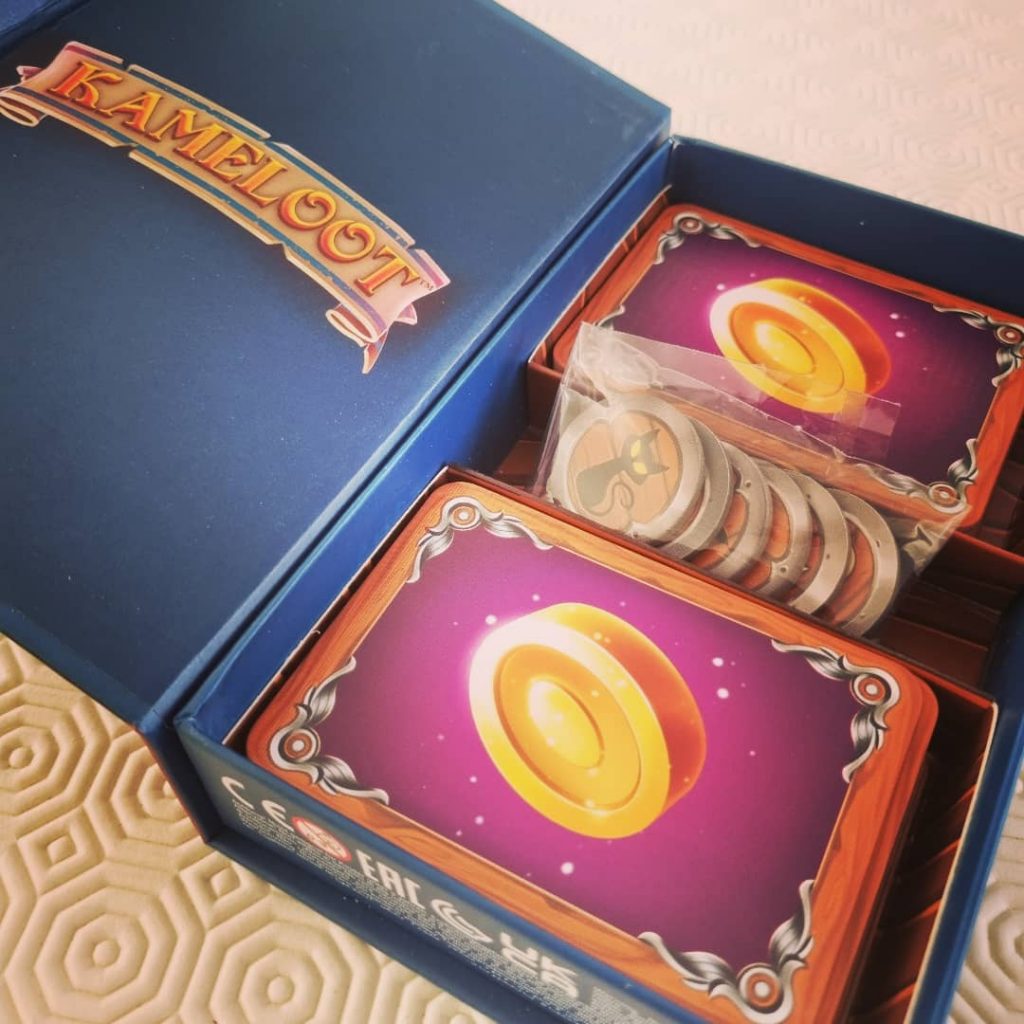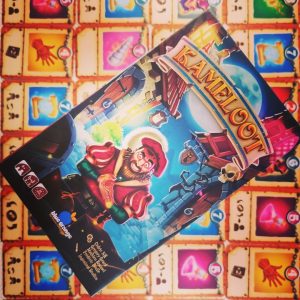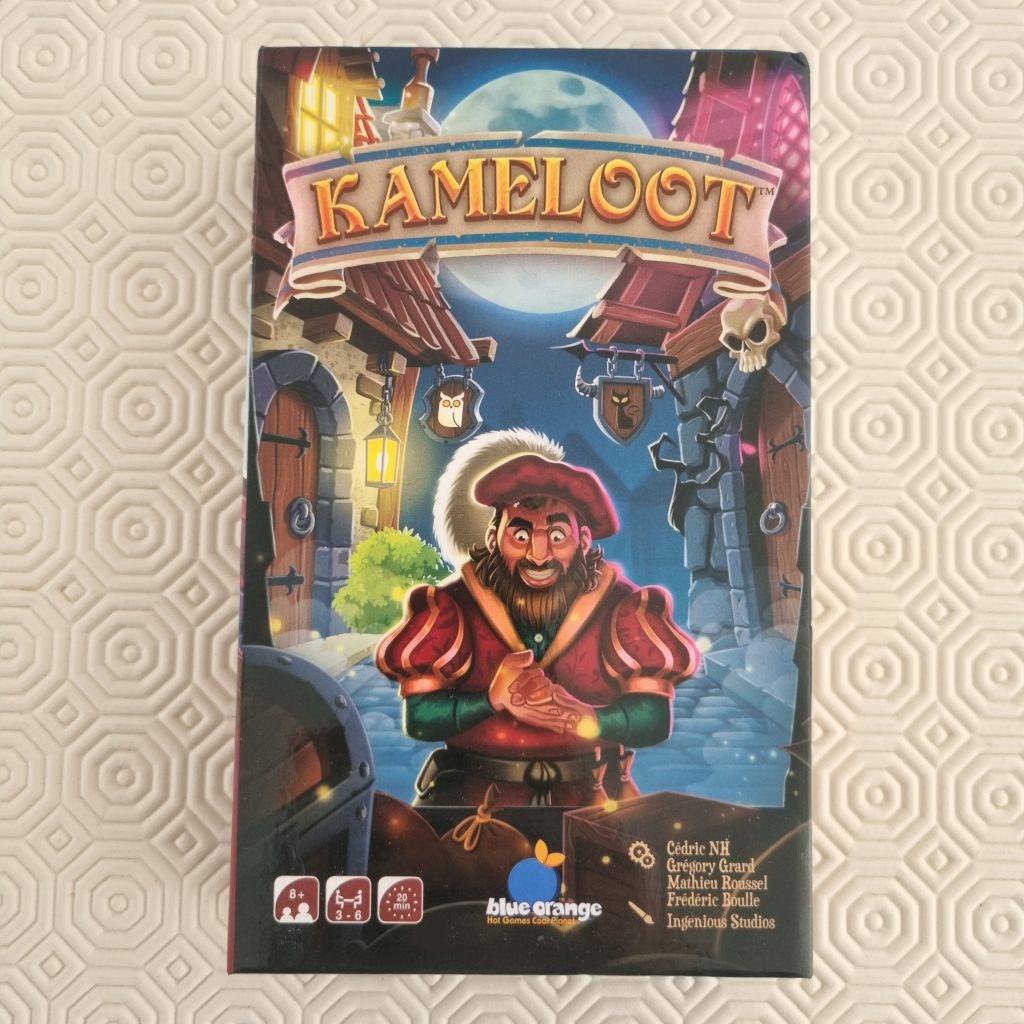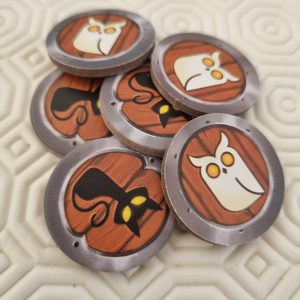Kameloot from Coiledspring Games is a fun twist on usual set collection games that will have you re-considering friendships around the table!
Publisher: Coiledspring Games, Blue Orange Games
Designer: Fred Boulle, Cédric NH, Grégory Grard, Mathieu Roussel
Artist: Ingenious Studios
Release date: 2021
3-6 Players
Age: 8+
20 -25 mins
Favouritefoe score: 9/10
Learn More
Kamewhat?
In Kameloot, you are vying to be the richest merchant of them all. You will be collecting and selling magical wares for gold coins. But, beware, for your hard work could be in vain! Whether scheming sorcerers or mischievous magicians, if you’re in a tavern with others, then your profits will be up for grabs!
Sneaky Set Up!
Just like other single deck games, Kamelooot is a synch to set up. Shuffle the magical objects deck and deal each player 4 cards. Place the remainder of the deck in the centre, and then give everybody a tavern token. Will you start off as a member of the Hooting Owls or the Black Cats? Protector or Schemer; toss the token to decide!

Turncoats and Turns!
Learning the rules of Kameloot is just as easy as set up.
On your turn, you can lay as many of one type of magical object cards as you want. Each object card has a number which shows the minimum needed to make a complete set. You can lay more (which you may wish to – but more on that later!), but there has to be at least that many in order to sell them. And when there are (e.g. seven 2 branch magical wands), you can flip those object cards over to the coin side. That is money banked for end-game scoring.
Now, you may have noticed that I have deliberately not said “when you have enough cards”. Nor have I said “That is money banked for you for end game scoring”. And this is the twist in Kameloot.
You see, you don’t have to actually own all the cards in the set you are trying to collect. If any player has laid magical objects down, they are up for grabs on a first come first serve basis. So, if you have previously laid 2 wands on the table, another player has 3 wands in front of them, and you have 2 in your hand on your turn, it’s selling time! Collect all 7 cards and flip them coin side.

Before you get money-hungry, however, you need to know this. You may not actually get to keep all that glorious gold. I know what you’re thinking……geeez, you need to share it with the players who gave up their own cards. Am I right? Well, not this time, my friends.
No, here, you split the profits just made equally between the members of your tavern. You always give yourself the first coin. But then, if anybody else has their token showing the same side as yours when it comes to selling time, they will be quids in. And that is whether they contributed any cards to the set or not!
Alternatively, if you can’t or don’t want to work on or sell a set, you can play a card to activate its magical power. Once used, it is placed it in the discard pile next to the deck.
Each magical object has a different power. For example, the magic cloak enables you to flip the tavern token of another player. Conversely, the magnet ring allows you to shout out a specific type of magical object and then hunt through the discard pile for the matching cards. There are also 3 wild unicorn horns that have no intrinsic power, but can be used to complete any set.

At the end of your turn, you draw your hand back up to four (unless you have activated the 6 fingered glove power), and play passes to the next player.
The game ends when the deck has been exhausted and nobody can take another turn.
Kamehoot or Kameboot?
This game really surprised us, and in a very good way. For such a simple rule set and quick play time, Kameloot demands sneaky strategy. It isn’t a card game that just leaves you at the mercy of random luck of the draw.
Kameloot is actually a game where timing can be everything. Knowing when to flip other’s tokens, when to sell, when to hold back, when to activate a power, when to switch allegiance yourself, and when to load a set with more cards than necessary are decisions for every turn in the game.
Having one eye on what everybody else is doing, and knowing that you might get an advantage if you align yourself with others (however temporarily), also brings a semi-co-operative feeling to Kameloot. Don’t get me wrong, everybody is out for themselves. But working with another player to divvy up the loot on a given turn could push you ahead, or even stop a stronger player from running away with the lead.

I’m also a big fan of the multi-use cards. Trambahn has the same idea – cards that also act as the money in the game. Perhaps it appeals to the neat, minimalist within me. But being able to convert the existing deck into money without the need for extra coins or notes is a simple but effective design feature. We do find that the cards can be difficult to separate when counting up at the end (this could be the textured finish), but that is a small point about what are otherwise nice cards to hold and use. The magnetic catch on the box that is no bigger than necessary, as well as the fun bright artwork, are also really nice.

Komboloot?
Now, one element which really ets me excited about Kameloot is the ability to combo actions for maximum effect. Get things just right, and you could use a ring to retrieve a bunch of cloaks that when added to someone else’s unfinished set, net you 6 coins all for yourself! Kamelikey Kamelikey a lot
Can’t deny it. It is super satisfying when you can profit from someone else’s hard work. Especially if you have just flipped your token and they haven’t noticed or worked out what it means for them! Similarly, stacking a set heavy with cards and selling before anybody else can share in the bounty is a sweet moment indeed.

Kamelovely!
Kameloot ticks our boxes. Please don’t get me wrong, we love lots of simply, fun, easy, card games. But, knowing that someone could earn your hard earned coins if you don’t consider the constantly changing allegiances, really elevates Kameloot to a higher level. It gives it a meatier feel without bogging it down with complicated rules or long play time. It stays light but feels more satisfying somehow– tan ideal filler game!
[please note that a copy of this game was kindly provided by the publisher for the purposes of this review but any opinions expressed are my own]










